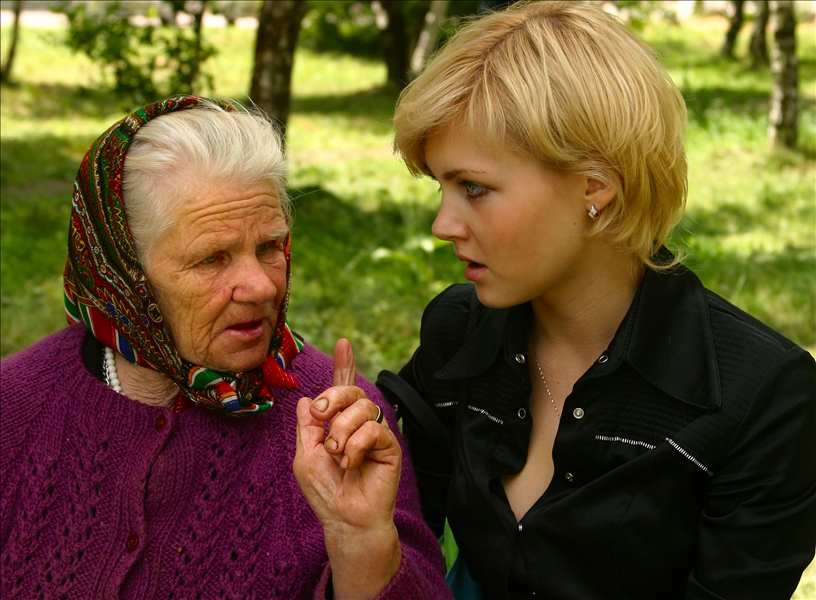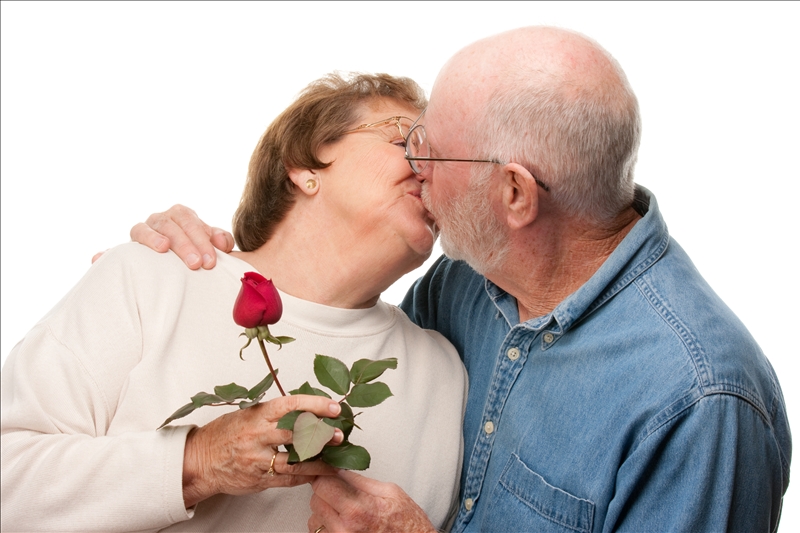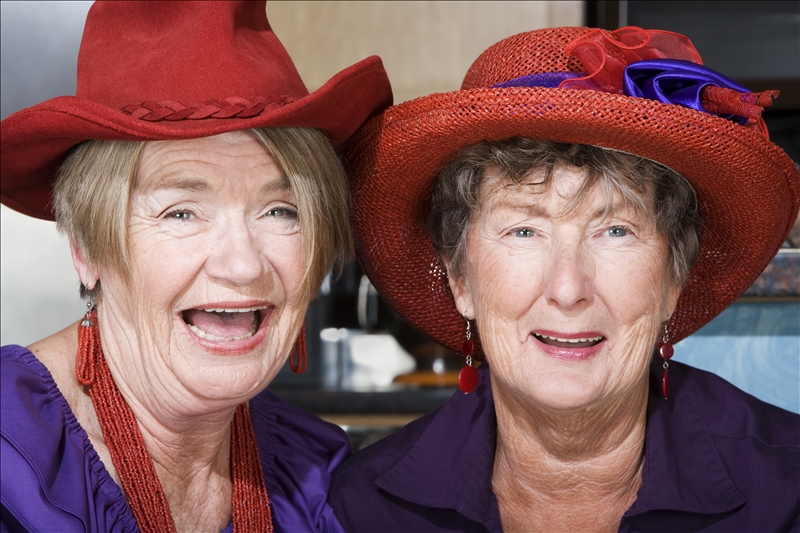|
Aging and Long-Term Care (10 Hours) > Chapter 4
|
|||||||||||||||||||||||||||||||||||||||||||||||||||||||||||||
Chapter 4: Social Aspects of AgingThrough a learning process called socialization, human behavior---of the culture into which people are born---is taught and learned via language, gesture, and role modeling. It is a life-long process, enhanced by humans' awareness of and curiosity about their environment. Many of the topics already presented in this course could also be included as a social aspect of aging:
A few will be touched on again from a different point of view. Social interaction and a social network are indispensable to elderly people's thriving. Rehabilitation professionals should reinforce continued social interaction that involves a broad network of friends, neighbors, and family. Income and PovertyThe median income for older persons in 2003 was $20, 363 for males and $11,845 for females. For one-third of Americans over 65, Social Security benefits constitute 90% of their income. Nearly 3.6 million of the elderly (10.2%) were below the poverty level in 2003. Another 2.3 million or 6.7% of the elderly were classified as near-poor (income between the poverty level and 125% of this level). (AoA 2007) Income Distribution among the elderly:
[QN.No.#36.Approximately what percentage of older people live in poverty?] The 2009 Health and Human Services poverty guidelines for household sizes for most elderly are (HHS 2009):
The elderly person's income will often dictate what interventions are possible. This requires rehabilitation specialists to "think outside the box" and use their imaginations freely. Family RelationsThe family maintains the well-being of its members at every stage of life. Exchange of support between family members is a life-time activity, nurturing their young and caring for their elders primarily within families. For the elderly, the family takes on further importance as aging-related changes increase their need for help. The number of generations that can be involved is larger than in the past because of increased life span; older folks today may interact with children, grandchildren, great-grandchildren, and great-great-grandchildren. The children, and to some extent the grandchildren, are the ones who will offer the most support to an elderly family member. Although it may appear the opposite, adult children are not generally isolated from their parents. There is frequent interaction and exchange of assistance, even when generations are separated by many miles. Studies show that the depth of obligation and positive regard between generations is little diminished by geographic separation (Reynold n.d.). The elderly often rely on family to aid with the needs of everyday living, or for aid with a chronic illness or during a crisis. Most of the help given to frail and disabled elderly living in the community is from family sources. Some of the main types of support given are: 
Studies have found that adult children are willing to give more support than the elderly expect or want. They discovered that well-intentioned family members who give inappropriate quantities of aid undermine the autonomy and self-respect of their elderly relations. If the older person considers support as excessive, he or she may feel guilty, resentful, incompetent, coerced, and/or lacking in autonomy. In this day and age, however, rather than role reversal there is often extended parenting, including:
Position in the FamilyWhen life in a family begins, an individual starts at the bottom of the hierarchy. If there are older siblings, they may have a sub-parental role in raising the newer members. One young child was noted to be giving numerous sharp, exact orders to the family dog. His mother asked, "Why are you being so bossy to the dog?" The boy answered, "Everybody gets to boss me, so I get to boss the dog." He was obviously at the bottom of the hierarchy! Then the person works his or her way up, perhaps marries and becomes one of the top two. In traditional Judeo-Christian homes, the top gun was always the father. But captain or first mate, with aging the person may begin a descent down the hierarchy. That person then becomes the one in need of a dog. If, because of health or otherwise, that happens, then there are adjustments to be made all around. If the family is to function well, those adjustments must be made. Sometimes, however, the frail older person continues to boss the father or mother---they bossed one of them for many years, you know---and becomes a bit tyrannical, then there may be frequent discord and abundant opportunity for someone to have the mature personality. Marital Roles and RelationshipsIn the vast majority of marriages that have lasted into old age, the marital relationship is the most vital aspect of family life (Brown 1996). Throughout those years of marriage the biggest part of their social lives has been built upon being married irrespective of the quality of the marriage relationship. Losing one's spouse is usually the greatest cause of stress an individual can suffer (Holmes & Rahe 1967). [QN.No.#37.According to Holmes and Rahe the most stressful event in a person's life is:] Throughout the course of a marriage, the way couples divide their family responsibilities and define their individual roles changes throughout the progress of the marriage. Marriages generally begin on a democratic basis, but move towards more distinct roles. In the later years, when the nest becomes empty and the couple retires, the marriage once again moves towards an egalitarian basis (Atchley 1987).  Compared to seniors who aren't married, married elderly persons have "higher levels of morale, life satisfaction, mental and physical health, economic resources, social integration and support, and lower rates of institutionalization" (Bengston et al 1990). Couples reported a number of reasons why their marriages are happy, including: [QN.No.#38.Compared to seniors who aren't married, married elderly persons have:]
Therapy for Aged Couples Of course not all older couples are satisfied with their marriages. They find that there are new challenges that bring stress to a previously happy marriage, or new situations that exacerbate old problems. Reasons for most of these are chronic health conditions, lack of mutual interests and values, and lack of companionship (Atchley 1987). Other reasons are the children leaving home, retirement, and lower financial status than expected. These bring on different needs and roles; the inability to cope with these changes may cause one or both to seek help. In working with older couples the goals can include reducing their anxiety and helping them adapt to the changes that are occurring. If they have had a happy relationship, then chances are good they can be helped to overcome the situational crisis. The therapist can draw on their strength from the past in being able to get through difficult times, make adjustments and live happily with each other. If the problem has been long term, the strength of the marriage may be severely tested and one or the other may decide they no longer have the patience or energy to work through their problems (Kirschner 1984). If the couple divorces, then there is grieving to do and new roles with which they must cope. The Elderly as Parents to their GrandchildrenAbout 450,000 grandparents aged 65 or more have the primary responsibility for their grandchildren who live with them (AoA 2007). This creates a shift in what is considered the normal human life cycle as more grandparents turn to parenting once again. This typically is the result of children lacking functional parents so these heroic grandparents step in. This was not the plan for their last years, but their strength helps provide the grandchildren a greater sense of normalcy. The alternative for the children is the foster care system where they are often separated from siblings, and frequently placed into unfamiliar homes, families, schools and communities. Community ParticipationIt has been found that "social and productive activities are as effective as fitness activities in lowering risk of death. Enhanced social activities may help to increase the quality of life" (Glass et al 1999). Seniors that live in the community can choose which activities to participate in. There is an increasing variety from which to choose; participation will depend on finances, accessibility, transportation, available time, health status, and previous exposure to the activity (McGuire 1991). From another perspective, many of those approaching the older years look forward to retirement when they will have more time to spend on activities that they enjoy. These may include traveling, hobbies, spending more time with grandchildren and various physical activities like running, golf and tennis. The following table illustrates the number of people who participate in regular physical activities. With physical exercise being so important to prolong life and the quality of that life, these numbers are low. Encouraging the elderly to participate in both physical activities and activities that require some mental challenges are important. The therapist should find out the interests the client may have or desire to develop. One approach to help the client become involved in more physical activities is through assigning behavioral tasks developed with the client. This may be walking, playing tennis, golfing, joining different clubs that revolve around physical activities or joining a health club. The client should report back on each task and their involvement in the task. Physical exercise is vital for physical, mental, and emotional health. [QN.No.#39.The majority of people 65 and older get regular exercise through physical leisure activities.true/False]
WorkWhen social security first came into being many felt like that was all they needed to retire and did not plan further. Others want a higher lifestyle and the current cost of living, including incurred debt, prevents them from retiring. Still others very much enjoy working and will continue as long as they are capable. All of these can contribute to people working past the age of 65. On the other hand, many have planned for retirement with the understanding that social security would not meet all of their needs and prepared to retire later. For those who were unable to retire as planned, having to work can cause anxiety, stress and some feelings of depression. Their bodies and minds may also have difficulty with performing the work tasks they had before. These issues should be addressed when assessing the client. The following table shows the percentage of people in different age groups still working in 2003:
Each of these shows a sharp decline between 1961 and 2003. For example, the percentage of those aged 62-64 who were working in 1961 stood at 75%.
Interestingly, whereas the percentage of older men still working decreased from 1961, the percentage of older women working increased. Social RelationshipsElderly participation in community has largely come to mean the extent to which individuals participate in one or another of various types of groups. They participate to improve their personal and social lives, and/or to bring about what they see as needed changes. With Age-Peer Friends and Neighbors Elderly people are no different than those of other ages in that they generally prefer having friends among their age peers. They share common values, interests, and experiences. Their relationships also act as a buffer against the age-related losses that they have in common. Just having friends is a "measure of social success" and a sign to them of "continuing vitality and social involvement." They also serve as substitutes for roles they had to give up in retirement and are important sources in the building of new social realities that are needed in old age (Jerome 1992, 72-74). 
[QN.No.#40.Which kind of neighborly support will most infuence whether or not elderly people have positive interaction with one another? ] An important factor that seems to influence whether or not elderly people will have positive interaction with one another is the degree to which those interactions might be reciprocal, thus maintaining the common wish for elements of independence in their lives (Brown 1996, 162). Participation in Community Groups Participation in voluntary community groups is another way elderly people look for meaningful and fulfilling relationships. There is a growing tendency for them to actively participate in a variety of age-specific groups where they can interact with others on the basis of shared values and interdependent relationships. It has been established that, as a whole, the elderly in the U.S. participate more in religious groups and activities than in any other type of group activity in the general community (Hooyman and Kiyak, 1991, 412). Young and Dowling (1987) state, "…Religious involvement (whether private or formal) is noteworthy in that it reveals a direct connection between beliefs (attitudes) and behavior." Participation in Senior Citizens' Centers In 1978 amendments were made to the Older Americans Act emphasizing the focal point of service delivery in senior centers---they were to be centralized service centers offering a variety of programs and information. Types of programs available include (Wagner 1995, 6-7):
Meals are seen as a vital service as dining provides health/nutrition benefits, as well as socializing opportunities. Generally people with fewer health problems participate more; when programs are offered that clients have suggested, there is more participation. Seniors who participate in their programs have healthier behaviors, fewer mental health problems (e.g., depression), and they have a more positive outlook on life (Miltiades et al n.d.). Participation in Retirement Homes/Communities The elderly's desire to establish a sense of community with their peers is reflected by their choosing to live in retirement homes and communities or age-segregated housing. Other reasons include economics and safety. One study (Longino et al 1980) found what they called a "retreatist" lifestyle among residents---"the warm companionship of those like themselves" that they enjoyed in retirement communities. The Elderly as Students Some universities and colleges are going so far as to create housing for elderly students on or near campus. They would do that only if a growing number of older Americans are going back to college and, obviously, if there was financial benefit---including potential endowments---in doing so. Other colleges have lowered tuition (at times only $3 per semester), waived application fees, and allowed them to earn degrees in whatever they choose---as long as they are sixty (or whatever) years old before staring classes (Matteson 1994). In the U.S. there are two approaches to education for elderly students: 1. Elderly enroll as regular students, sharing classes with students of all ages. The intergenerational interaction is important to them. 2. Classes offered exclusively for older students on college campuses. The interaction with other elderly people on an academic level is important here. Elderly benefit intellectually and socially from pursuing academic interests, and are also able to prepare to benefit society as a whole during retirement. Leisure Skills(Singleton 2002, 71)
For seniors not living in the community, and for a few that are, it may be more difficult to find activities in which they wish to participate. Leisure inventory scales may be used to find their interests, offer activities accordingly, giving them a measure of control of leisure choices. A simple Adult Leisure Inventory may be found at http://www.ctrrec.org/adultleisureinventory.pdf. Elderly people in nursing homes participate more in leisure activities when they have an active part in planning them as a committee in cooperation with health professionals (Singleton 2002, 72). The planning itself is an excellent social activity. Development of Leisure PatternsElder participation in leisure activities is dependent on (Singleton 2002, 69):
[QN.No.#41.Elder participation in leisure activities is dependent on:] Before retirement, individuals find purpose, usefulness and self-respect through work. After retirement they generally thrive best when they find these same experiences in their leisure activities. The social role in retirement can provide unique opportunities to enhance one's self-worth in society (Kaplan 1979). Recreational programming and opportunities should be based on more than age alone, but primarily on their interests. Other things to take into account are (Singleton 2002, 71):
[QN.No.#42. Recreational programming and opportunities should be based primarily on the individual's:] With all these in mind a new leisure pattern can be found that will benefit the elderly individual. Abuse of The ElderlyOne often hears of seniors who have been abused, neglected, and exploited---many times by people they trust the most (NCEA n.d.):
Range of the ProblemEvery year an estimated 2.1 million older Americans are victims of physical, psychological, or other forms of abuse and neglect. Experts estimate that only one in six cases is reported. Recent research suggests that elders who have been abused tend to die earlier than those who are not abused, even in the absence of chronic conditions or life threatening disease (AoA 2009). Definition of Elder AbuseElder abuse is a term referring to any knowing, intentional, or negligent act by a caregiver or any other person that causes harm or a serious risk of harm to a vulnerable adult. The specificity of laws varies from state to state, but broadly defined, abuse may be (NCEA 2009): [QN.No.#43.Elder abuse is a term referring to any knowing, intentional, unintentional, or negligent act by a caregiver or any other person that causes harm or a serious risk of harm to a vulnerable adult.True/False]
Symptoms of Elder AbuseCues that can't be explained medically may signal elder abuse. Even though many of the symptoms listed below can occur as a result of disease conditions or medication, their appearance indicates investigation is needed to determine and remedy the cause (Office on Aging 2009).
[QN.No.#44.Which of the following are symptoms of potential emotional or psychological abuse of an elderly person?] Reporting Elder AbuseIf you, as a caregiver, suspect there is abuse that is not in your jurisdiction or power to solve, you must report it to other agencies. Call the police or 9-1-1 immediately if someone is in immediate, life-threatening danger. Do not put the older person in a more vulnerable position by confronting the abuser yourself unless you have the victim’s permission and are in a position to help the victim immediately by moving him or her to a safe place. [QN.No.#45.You should not report abuse of the elderly if you only suspect it.True/False] If the danger is not immediate, but you suspect that abuse has occurred or is occurring, please tell someone. Relay your concerns to the local adult protective services, long-term care ombudsman, or police. For a list of reporting numbers go to State Resource Directory on Elder Abuse Prevention http://www.ncea.aoa.gov/NCEAroot/Main_Site/Find_Help/State_Resources.aspx. An added problem is sometimes the elderly person's diminished mental capacity results in false claims of abuse; when valid claims are made they, are not taken seriously. It is better to investigate a false claim than to allow abuse to continue as a result of not investigating it. The National Center on Elder Abuse (NCEA) is a comprehensive resource for issues of Elder Abuse. Here is a link to their site: http://www.ncea.aoa.gov/ncearoot/Main_Site/index.aspx In California, as in other states, laws provide regulations regarding mandated reporters and penalties. Those from California are provided here as an example for the healthcare practitioner. The NCEA (linked above) provides links to each state's laws regulating Elder Abuse. The healthcare professional needs to investigate for signs and symptoms of abuse and report any reasonable suspicion of abuse as stated in the following California statutes (California Welfare n.d.): CALIFORNIA WELFARE AND INSTITUTIONS CODE SECTION 15630 Who is a mandate reporter of Elder Abuse? Anybody who has assumed care for an elderly person is a mandated reporter: 15630. (a) Any person who has assumed full or intermittent responsibility for care or custody of an elder or dependent adult, whether or not he or she receives compensation, including administrators, supervisors, and any licensed staff of a public or private facility that provides care or services for elder or dependent adults, or any elder or dependent adult care custodian, health practitioner, clergy member, or employee of a county adult protective services agency or a local law enforcement agency, is a mandated reporter. (b) (1) Any mandated reporter who, in his or her professional capacity, or within the scope of his or her employment, has observed or has knowledge of an incident that reasonably appears to be physical abuse, as defined in Section 15610.63 of the Welfare and Institutions Code, abandonment, abduction, isolation, financial abuse, or neglect, or is told by an elder or dependent adult that he or she has experienced behavior, including an act or omission, constituting physical abuse, as defined in Section 15610.63 of the Welfare and Institutions Code, abandonment, abduction, isolation, financial abuse, or neglect, or reasonably suspects that abuse, shall report the known or suspected instance of abuse by telephone immediately or as soon as practicably possible, and by written report sent within two working days, as follows: (A) If the abuse has occurred in a long-term care facility, except a state mental health hospital or a state developmental center, the report shall be made to the local ombudsperson or the local law enforcement agency." What are the penalties for failure to report? Penalties for failing to report becomes more severe if it is determined that as a result of the failure to report the elderly person is injured or killed: "(h) Failure to report physical abuse, as defined in Section 15610.63 of the Welfare and Institutions Code, abandonment, abduction, isolation, financial abuse, or neglect of an elder or dependent adult, in violation of this section, is a misdemeanor, punishable by not more than six months in the county jail, by a fine of not more than one thousand dollars ($1,000), or by both that fine and imprisonment. Any mandated reporter who willfully fails to report physical abuse, as defined in Section 15610.63 of the Welfare and Institutions Code, abandonment, abduction, isolation, financial abuse, or neglect of an elder or dependent adult, in violation of this section, where that abuse results in death or great bodily injury, shall be punished by not more than one year in a county jail, by a fine of not more than five thousand dollars ($5,000), or by both that fine and imprisonment. If a mandated reporter intentionally conceals his or her failure to report an incident known by the mandated reporter to be abuse or severe neglect under this section, the failure to report is a continuing offense until a law enforcement agency specified in paragraph (1) of subdivision (b) of Section 15630 of the Welfare and Institutions Code discovers the offense." (Bolding font added) |
|
||||||||||||||||||||||||||||||||||||||||||||||||||||||||||||
|
Aging and Long-Term Care (10 Hours) > Chapter 4
Page Last Modified On:
Deprecated: Function strftime() is deprecated in /home/devxspeedy/public_html/lib/smarty-3.1.34/libs/plugins/modifier.date_format.php on line 81 February 18, 2015, 09:33 AM |
|||||||||||||||||||||||||||||||||||||||||||||||||||||||||||||
